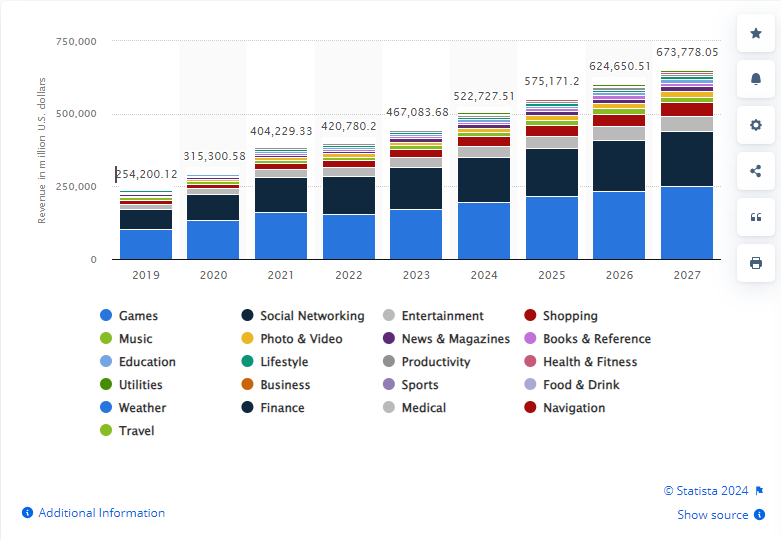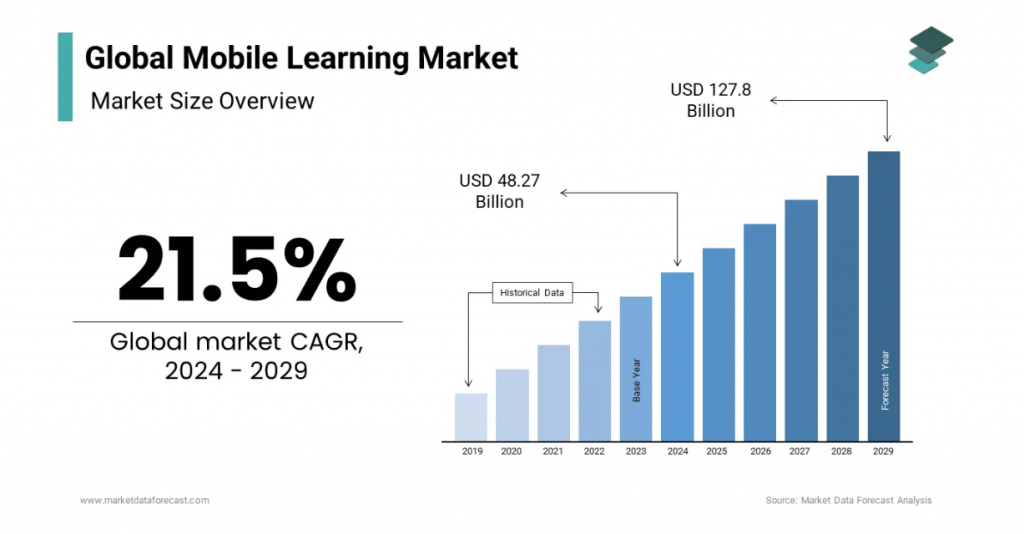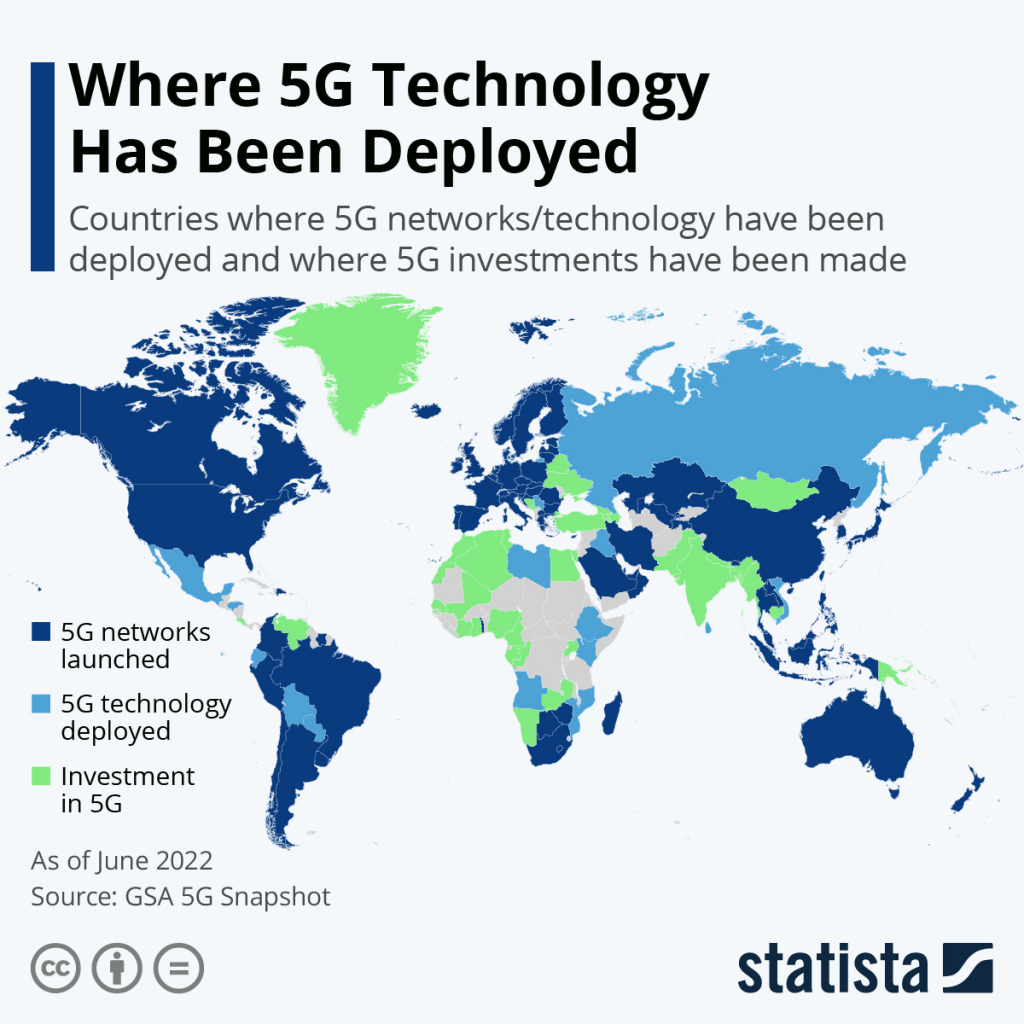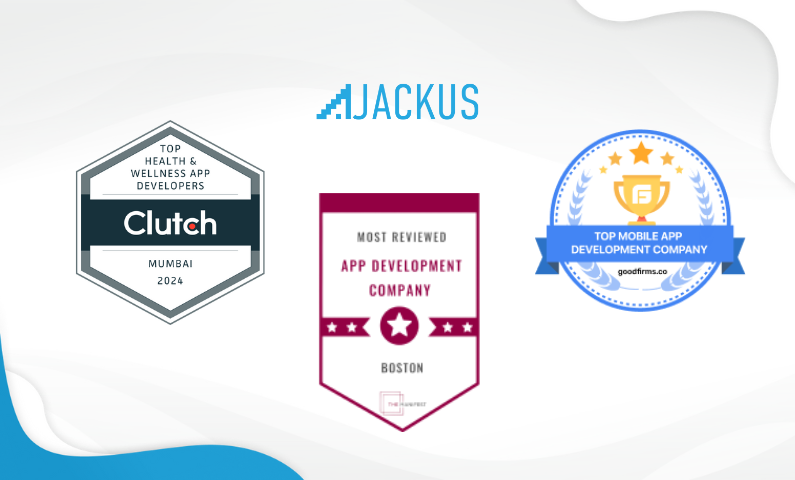Ever wondered how Amazon, Netflix, Facebook, and YouTube rose to dominance? The secret sauce of their success is tapping into mobile app technology. And it paid off big time.
As mobile phones became a daily staple, these tech giants were quick to adapt, bringing everything from entertainment to shopping right into our pockets.
Now, custom mobile app development has exploded. Looking for a cab? Shopping for groceries? Booking a flight? Even finding a date? Just head to your app store, and you’ll find it all.
If you want to stay updated on the latest trends or make the most of mobile app development services, this blog is for you. Here are the top trends for 2024 and beyond.
12 Defining Trends In Custom Mobile App Development
It feels like there’s a new app popping up every day, right? That’s because building apps has never been easier. With all the amazing tools and platforms out there, anyone can create apps that customers are looking for. And here’s the fun part: there are some really cool trends happening right now that are totally changing the game. Let’s check them out.
Revenue of mobile apps worldwide 2019-2027, by segment.

Source: Statista
1. Mobile App Security
Mobile security has always been a big deal in mobile app development. But these days, it’s a must-have, so no exceptions.
One of the most significant mobile security concerns arose with the LastPass data breach in late 2022. In August, the company revealed that hackers had stolen source code. By November, it disclosed that “certain elements” of customer information were accessed, though they assured users their passwords remained safe.
As mobile apps become a bigger part of our daily lives—whether we’re managing money or shopping for the latest trends—security has to stay a top priority. Apps with payment or money transfer features need serious protection. That’s why developers are turning to things like code encryption, verified backends, and trusted payment gateways to keep users safe.
- Security-as-a-Service
- AI in cybersecurity
- Mobile RASP
Mobile app security is evolving fast, creating a safer digital space where users can enjoy all the benefits of their favorite apps worry-free.
2. Instant Apps
Imagine using parts of an app without ever downloading it. That’s exactly what instant apps let you do—no installation required.
Developers use Android Studio to create these instant apps, making it easy to try them out without any installation. And even though it’s a relatively new trend, it’s already making waves among companies. For example, one of our clients, Dotloop’s Instant Apps, provides buyers and sellers with a native experience of signing documents. Since its launch, there’s been a 62% increase in mobile document signing among buyers, sellers, and real estate professionals.
Sure, there are some size limits for now, but those will likely be smoothed out soon. So, if you’re planning to launch on Google Play in 2024, offering an instant version of your app is a no-brainer.
3. P2P Mobile Apps
P2P mobile apps are on the rise, and for good reason. For example, Zelle quickly became the go-to for peer-to-peer payments, leaving Venmo and PayPal behind. Fast forward to 2024, Zelle has handled over 5 billion transactions, racking up an incredible $1.5 trillion. Yep, that’s a trillion with a ‘T’!
These apps let you make direct transactions and communicate with others without the need for a middleman. Whether it’s peer-to-peer payments, file sharing, or a collaborative marketplace, everything happens right between users.
Looking ahead to 2024 and beyond, technology will make P2P apps even smoother. You’ll easily connect and handle transactions directly, and as more folks see how handy peer-to-peer can be, this trend will keep on growing.
4. Super Apps
We can say that super apps are going to be huge for sure. These apps combine tons of features and mini-apps into one place, making everything easier for you.
Take Gojek, for example. What started as a ride-hailing service has now evolved into a super app offering multiple digital services. Today, the company boasts a valuation of $10 billion.
Apart from this, one can already see how Facebook has grown from a social network to a marketplace. Amazon lets you shop and pay bills in one place.
So, in 2024 and beyond, super apps will always be at the forefront of custom mobile app development. They’ll be the go-to solution for customers, partners, and employees, offering everything you need in a single app.
5. Apps for Foldable Devices
Remember when Samsung brought back foldable phones with the Galaxy Fold in 2019? They’re like having a phone and tablet all in one. You can make a call with it folded, then unfold it to watch videos on a bigger screen.
Apps now need to adapt smoothly as these screens fold and unfold. In 2024, shipments are expected to reach around 17.7 million units, an 11% increase, which will bring the market share up to 1.5%. However, this growth is still below expectations, with the segment likely to surpass 2% market share by 2025.
What’s next for foldable devices?
- Phones that can fold into wearable gadgets.
- Running multiple apps at once on a bigger screen.
- E-readers that feel like real books.
- More immersive experiences for gaming, navigation, and virtual products.
6. Wearable App Integration
Wearable gadgets aren’t just about fashion—they’re changing fitness and healthcare. These devices help prevent heart attacks and send health alerts, offering real benefits.
Although wearables are popular, they still have lots of potential. Not to mention, improvements in sensors, battery life, and data processing are making them better and more attractive.
You can see big brands like Apple, Samsung, Fitbit, and Garmin are constantly adding new features. For instance, Apple added fall detection and sleep tracking to their watches.
Some exciting trends to watch for in wearables include:
- IoT integration
- Glucose monitoring
- GPS tracking
- Contactless payments
- Enhanced sensor technology
As these devices evolve, mobile apps will play an essential role in connecting users with their wearables, offering personalized insights and helpful data.
7. Internet of Things (IoT) App Integration
IoT is all about smart devices talking to each other and doing things on their own. And this is without needing you to lift a finger.
For example, say you’re out, and with a quick tap on your mobile app, you lock your door, dim the lights, and turn off the geyser. That’s the magic of IoT.
Platforms like Amazon Alexa and Apple Siri are prime examples of how IoT makes life easier.
Here are some IoT trends in custom mobile app development to watch:
- Edge computing
- AI and AR/VR integration
- Blockchain for security
- Open Source Development
- More Hybrid Apps
As IoT becomes a bigger part of our daily lives, expect more apps to offer intuitive interfaces, strong security, and smooth integrations.
8. Cloud-Based Mobile Applications
Cloud computing is another big trend ready to shake up app development.
Are we already using the cloud with apps like Dropbox, Slack, and Zoom? These apps thrive on the cloud’s flexibility, scalability, and performance.
But with mobile apps, we’re just scratching the surface. In 2024, we’ll see cloud computing unlock even more possibilities for app development.
Developers can build next-gen apps that run on virtual servers, breaking down device barriers. Cloud-native apps work across different platforms, offering a consistent user experience and making updates a breeze.
Keep an eye on these cloud computing trends:
- Hybrid cloud solutions
- Quantum computing
- Evolving cloud services
In the coming years, cloud computing will boost mobile app development, improving reliability, accessibility, speed, processing power, and security.
9. Cross-Platform Mobile Development
“One Codebase, Many Platforms” is a hot trend in custom mobile app development for 2024.
This approach lets developers build apps for both iOS and Android using a single codebase. It keeps user experiences consistent across devices, cuts down on costs, speeds up development, and nearly matches native performance.
Top frameworks like Flutter, Kotlin, React Native, and Xamarin make this possible. Big names like Shopify, Walmart, Facebook, Google, and Spotify are already using cross-platform development to boost efficiency and user experience.
As more businesses jump on board, 2024 will be all about cross-platform innovation.
10. Mobile Wallet and Contactless Payments
“Tap and Pay” is shaking up how we handle transactions.
Google Pay, PayPal, PhonePe, and other mobile wallets are now part of everyday life. They securely store your card info and use Near Field Communication (NFC) to make transactions quick and clean.
While digital wallets aren’t new, they’re set to become even more essential. Soon, mobile payments will be a must-have feature for any app that handles transactions.
Here are some trends to watch in contactless payments:
- Biometric authentication
- Blockchain and cryptocurrencies
- Internet of Things
- Voice-automated payments
- AI in payments
- Super apps
- Buy now, pay later
With AI and easy-to-use features, mobile payments are set to be the future of transactions.
11. Mobile Learning
Mobile learning is becoming a big deal and will shape the future of education. The market for it will grow to $127.8 billion by 2029. And not to mention a strong annual growth rate.
Why is mobile learning catching on? It’s easy to use anywhere and anytime, and it makes learning more interactive and enjoyable with features like instant feedback and immersive experiences.
With the growing interest in custom mobile app development, now’s a perfect time to get involved. If you have an idea or need a platform for training, a team experienced in developing educational apps can help make it happen.

Source: Market Data Forecast
12. On-Demand App Development
On-demand app development is all about creating apps that meet immediate needs. These apps let users get services or products right when they need them. Examples include food delivery apps like Uber Eats or ride-sharing apps like Uber and Lyft.
Since the lockdown, food and grocery delivery apps have really taken off. People are using them more than ever, and the food delivery market is expected to hit $320 billion by 2029. With this kind of growth, we’re going to see even more new on-demand apps popping up soon.
In the future, on-demand apps will keep improving. The focus will be on making them easier to use, with better systems and faster service.
Top 7 Mobile App Development Technologies
Now, let’s talk about technologies you can use in mobile application development. We have used some of these technologies.
1. Artificial Intelligence and Machine Learning
With AI and Machine Learning, custom mobile app development services are experiencing a paradigm shift. Although they’ve been around for a bit, recently, things have been upgraded to the next level. For example, our developers have been making AL ML apps more innovative, automated, and personalized.
And for sure, you can see AI and ML in all kinds of industries now—e-commerce, fintech, insurance, healthcare, and more. Developers are using these technologies to build apps that are not just smarter but also easier for you to use.
Here are some AI/ML technologies in mobile app development to keep an eye on:
- Image recognition
- Face detection
- Text and image classification
- Sentiment analysis
- Speech recognition
- Predictive maintenance
The AI market is booming, and businesses are leveraging these advancements to create apps that adapt and grow with user needs.
2. Extended Reality (XR)
XR, which covers Virtual Reality (VR), Augmented Reality (AR), and Mixed Reality (MR), is changing how we use apps. It mixes the digital world with the real one to create more exciting experiences.
XR is already making a splash in gaming, education, shopping, and healthcare. And this is just the beginning. Get ready for even more engaging and realistic apps in the near future.
Here are some XR technologies to watch:
- Metaverse XR
- Mixed-reality ecosystems
- Digital Twins
- Photorealistic visuals
- Hyper-realistic avatars
- Immersive training
- Haptic technology
- Cloud XR
- Holoportation
As people crave more immersive content, integrating XR into mobile apps will be key. It’s setting the stage for some really exciting and interactive experiences in the future of custom mobile app development.
3. Chatbots
Chatbots have actually been around for over a decade. Today, however, AI-powered chatbots are trendsetters in customer service. They’re popular on websites because they reply instantly, work 24/7, and get better with machine learning. They’re not just for answering questions anymore—they’re also used for things like mental health support.
Even though chatbots have a lot of potential, not all mobile apps use them yet. But with AI improving, chatbots are getting more and more lifelike.
Here’s what’s trending in chatbot tech:
- Voice recognition
- Smarter bots
- Social media integration
- Data analysis
- Hyper-personalized responses
Chatbots are on the rise. Both businesses and users are starting to love them. They’re becoming a key part of mobile app trends, offering natural conversations and customized experiences.
4. Beacon Technology
Beacon technology is becoming a big deal in custom mobile app development.
For example, Beacons use Bluetooth signals to send targeted info to nearby devices. This is quite disruptive for businesses like retail, healthcare, and tourism. Imagine getting personalized offers or real-time updates based on where you are.
Beacons can help with navigation in places like malls, museums, or airports. They also enhance user interactions and create new app opportunities.
Here are some cool technologies in beacon tech:
- Mobile payment beacons
- AI-powered chips
- Automated machine learning
- Beacon treasure hunting
This tech is all about making user experiences more personalized and location-based.
5. The 5G Revolution
Many countries are already using 5G, and it’s making apps faster than ever. Downloads happen in the blink of an eye, and smart 5G technology is improving everyday life in cities. That’s the power of 5G. It’s making everything on your phone quicker and more responsive.
With 5G, you’re already seeing a massive rise of:
- OTT platforms with 4K streaming
- VR-based gaming apps
- Extremely precise location trackers
- Creative, Interactive, and Data-Intensive Applications
- Smart cities
- Metaverse
As 5G becomes more common, we’ll see even more custom mobile app development. The future of mobile apps is looking exciting.

Source: Statista
6. Augmented Reality and Virtual Reality
Augmented reality adds digital objects to the real world, while virtual reality pulls users into entirely virtual environments. Now this is a killer combination for how we experience the world.
A great example is Pokémon Go, which showed how AR/VR can shake things up. But it’s not just about games anymore. Fields like design, marketing, and shopping are also starting to see the potential of AR and VR.
Apps like Google Maps, Snapchat, IKEA Place, Yelp, and Quiver are leading the way, bringing users more engaging and innovative experiences.
Some exciting technologies in this space include:
- The metaverse
- AR glasses
- Autonomous vehicles using AR/VR
- Better AR/VR displays
- Remote assistance
- AR-based navigation
With AR and VR in the mix, custom mobile app development is on the verge of something big.
7. Low Code and No Code
Low-code and no-code platforms are becoming everyone’s favorite choices in mobile app development. Now, even people without much technical know-how can build apps easily.
With Low-Code, you get pre-built components and drag-and-drop features. No-Code takes it a step further, catering to those with little to no coding experience.
Google buying Appsheet shows how big this movement is becoming. Platforms like Zapier and Bubble are also making it easier for both developers and non-developers to create powerful apps.
These platforms speed up development, make it accessible to more people, and cut costs. So, business users, entrepreneurs, and domain experts can now play a bigger role in creating apps.
What’s next for LC/NC:
- More citizen developers
- Integration with other tech
- LCNC for data analysis and visualization
- CNC for rapid prototyping and MVPs
Heading into 2024 and beyond, LC/NC will keep growing, promising more efficiency and easier access to custom mobile app development.
Check out our low code no code services.
4 Popular Features of Custom Mobile App Development Services
These features of mobile development that used by many top companies. Let’s go through them one by one.
1. Touchless UI
Imagine controlling your phone without touching it—sounds cool, right? That’s Touchless UI for you.
You already know about biometric logins. Touchless UI takes it up a notch. You can answer calls, snooze alarms, control music, and snap photos with just a wave or a snap.
And it gets even better. Developers are working on eye-tracking, or “gaze tracking.” This lets you scroll through your feed just by looking at it. Apps like Facebook, Instagram, and Netflix are already experimenting with this tech.
Upcoming mobile features in Touchless UI:
- Gesture control technology
- Gaze tracking
Touchless UI will make your phone experience way more fun and hands-free. Isn’t it exciting to know that you can change your music while cooking without even touching your phone?
2. Voice Recognition
Voice recognition is changing the game in custom mobile app development. Just think about how virtual assistants like Alexa and Siri are making waves. They let you navigate, search, and control your apps hands-free.
Voice tech is not just about convenience. It’s also helping fight insurance fraud and making audiobooks more engaging. Users are loving the ease and immersion that voice-enabled content brings.
Features in Mobile Apps with Voice Recognition:
- Voice search and navigation
- Hands-free control
Voice technology is changing how we use apps, making everything more intuitive and easy. It’s all about giving you a smoother, hands-free experience.
3. Double Down on Motion Design
With attention spans getting shorter, video content and motion designs are key in custom mobile app development.
Dynamic animations and transitions make apps visually exciting and interactive. They grab users’ attention and guide them smoothly through the app.
Users now want more engaging and visually appealing interfaces. That’s why motion design is a must for developers who want their apps to stand out.
Upcoming features in motion design:
- Hyper-realism and 3D
- Disruptive retro
- Mixed media
- Realistic transitions and characters
- Squishy & textured objects
- Experimental minimalism
- Immersive experiences
In the future, motion designs will be a top tool for creative advertising and marketing. From simple animations to complex transitions, they help make apps more engaging and user-friendly.
4. Predictive Analytics
Predictive analytics has been providing invaluable services for custom mobile app development. Just look at Netflix and Amazon. Netflix suggests movies and shows based on what you watch. Amazon recommends products tailored to your interests.
In 2024, this trend will only grow. Predictive analytics will help businesses use data from app development to avoid surprises and focus on innovations. It’ll also let apps predict user actions and offer personalized experiences.
Get ready for predictive analytics to make apps way smarter and more user-friendly in the near future.
Examples of Mobile Apps We Developed for Clients
Here’s how we’ve helped our clients across industries in custom mobile app development.

1. Grid Master
We built a robust fantasy gaming app for Grid Master, ensuring secure management of Financial Information, SPI, and PII. With technologies like React, React Native, Django, and PostgreSQL, the app guarantees both excitement and data security. Our custom mobile app development helped Grid Master boost user trust, attracting more players and driving increased revenue through a seamless and protected gaming experience.
2. GoSafe
For GoSafe in the oil and gas industry, we developed an app that strengthens safety protocols and enhances risk mitigation at the workplace. Built on React Native, Django, and PostgreSQL, it ensures the highest standards of safety. GoSafe’s enhanced safety app improved workplace compliance and reduced risk, leading to safer operations and reduced costs from accidents or downtime.
3. Raya Health
We crafted an online web application for Raya Health that streamlines COVID-19 vaccination processes. Using React, Django Framework, and PostgreSQL, the app is designed to efficiently manage vaccination workflows. Our web application for Raya Health accelerated COVID-19 vaccination workflows, improving patient management and supporting their role in public health initiatives.
4. Juvoxa
We developed a digital health app that offers a library of over 6,500 quality health content options. The app provides reliable information at users’ fingertips for improved health outcomes. The digital health app empowered Juvoxa to provide accessible, high-quality healthcare content, fostering better patient engagement and supporting their growth in digital health services.
5. Instarem
We developed a seamless app for Instarem that offers low-cost overseas money transfers with competitive FX rates. This fintech app is designed for easy, secure, and efficient international transactions. Instarem’s app-enabled faster and more cost-effective international money transfers, helping them expand their customer base and boost transaction volumes globally.
Conclusion: Get Custom Mobile App Development
Mobile app development is always changing. If you’re relying on mobile trends from a couple of years ago, you’ll fall behind fast. So, you must stay updated on the latest trends.
Not to mention, for resellers and mobile app developers, these 2024 trends aren’t just useful but the guide to staying ahead of the curve. Understanding these trends gives you an edge, and your developers need to incorporate them into their work.
That doesn’t mean you need to apply every trend to every app, but knowing how the market is shifting helps you adapt.
Need help with custom mobile app development? Let’s talk—schedule a call, and we’ll work through your project needs together.

Start a Project with Ajackus













